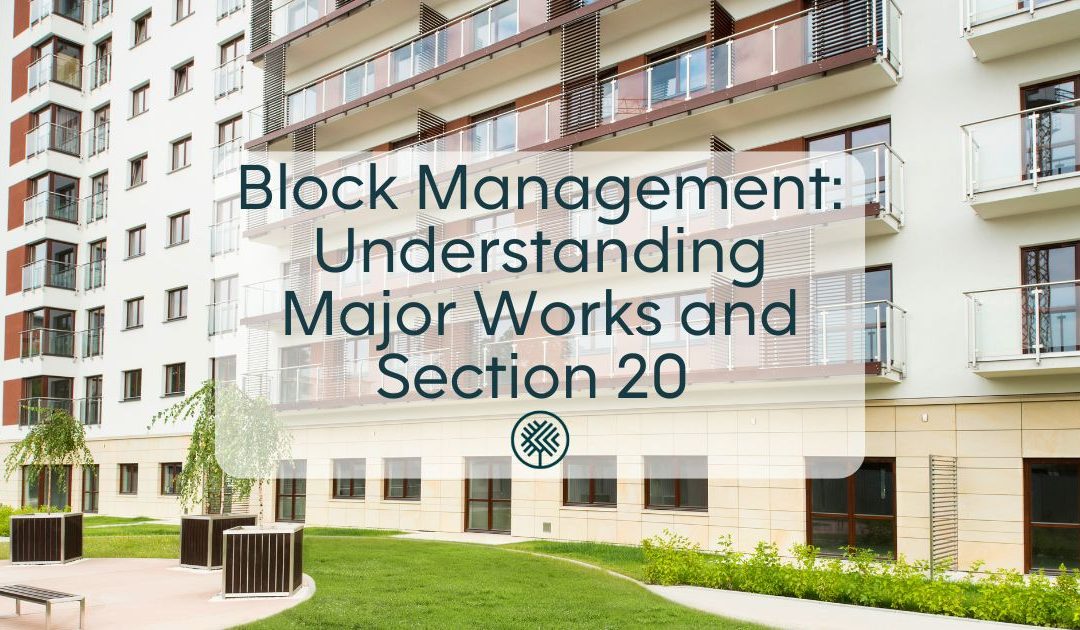For leaseholders and property managers alike, major works and Section 20 consultations are important but often misunderstood parts of block management. Whether it’s a roof replacement, external decoration, or structural repairs, knowing your rights and responsibilities under Section 20 of the Landlord and Tenant Act 1985 can save time, money, and stress.
In this blog, we’ll break down what major works are, what Section 20 requires, and how the process protects both landlords and leaseholders.
What Are Major Works?
“Major works” are large-scale maintenance or repair projects carried out on a residential block or development. These can include:
- Roof replacements
- External redecoration
- Window renewal
- Lift refurbishments
- Structural repairs
- Fire safety upgrades
These works are often essential for maintaining the building’s safety, compliance, and long-term value — but they can come with a significant price tag.
What Is Section 20?
Section 20 of the Landlord and Tenant Act 1985 is the legal framework that ensures leaseholders are consulted before being charged for major works costing more than £250 per leaseholder.
The law is there to protect leaseholders from unexpected or unreasonable charges — and to ensure transparency in how service charge money is spent.
When Does a Section 20 Apply?
If a freeholder or managing agent intends to:
- Carry out qualifying works costing more than £250 per leaseholder, or
- Enter into a qualifying long-term agreement (over 12 months) costing more than £100 per leaseholder annually
…then a Section 20 consultation must take place.
Failure to follow the correct process can mean the landlord is limited to recovering only £250 per leaseholder, even if the work costs significantly more.
The Three Stages of a Section 20 Consultation
1. Notice of Intention
This is the first formal notice to leaseholders. It must:
- Describe the proposed work
- Explain the reasons for it
- Invite leaseholders to submit written observations and nominate contractors
2. Estimates & Statement
Next, the managing agent or freeholder gathers at least two estimates (including one from a leaseholder-nominated contractor if applicable) and sends out:
- A summary of estimates
- A second notice inviting comments
3. Notice of Award of Contract
Once a contractor is chosen, leaseholders are notified of:
- The contractor selected
- The reasons for the selection, especially if not the cheapest
Each stage includes a minimum 30-day consultation period, giving leaseholders the opportunity to respond.
Why It Matters
For leaseholders, Section 20:
- Ensures transparency in how your service charge is spent
- Gives you a voice in decisions that affect your property
- Provides protection from overcharging
For managing agents or freeholders, following the Section 20 process:
- Ensures legal compliance
- Reduces disputes or challenges
- Helps maintain positive relationships with leaseholders
Top Tips for Leaseholders
- Engage early: Read notices and submit comments within the deadlines.
- Nominate contractors if you have trusted contacts — it’s your right.
- Ask questions: If you’re unsure about the necessity, scope, or cost of the works, don’t be afraid to request clarification.
Final Thoughts
Major works are often unavoidable, but they don’t have to be a surprise. With clear communication and a well-run Section 20 consultation, leaseholders can feel confident their money is being spent fairly and wisely.
At Oakfield, we take our responsibility in major works and Section 20 consultations seriously — ensuring a smooth, transparent process for all involved.
Have questions about upcoming works in your block? Get in touch with our block management team today, check out our contact details here.

